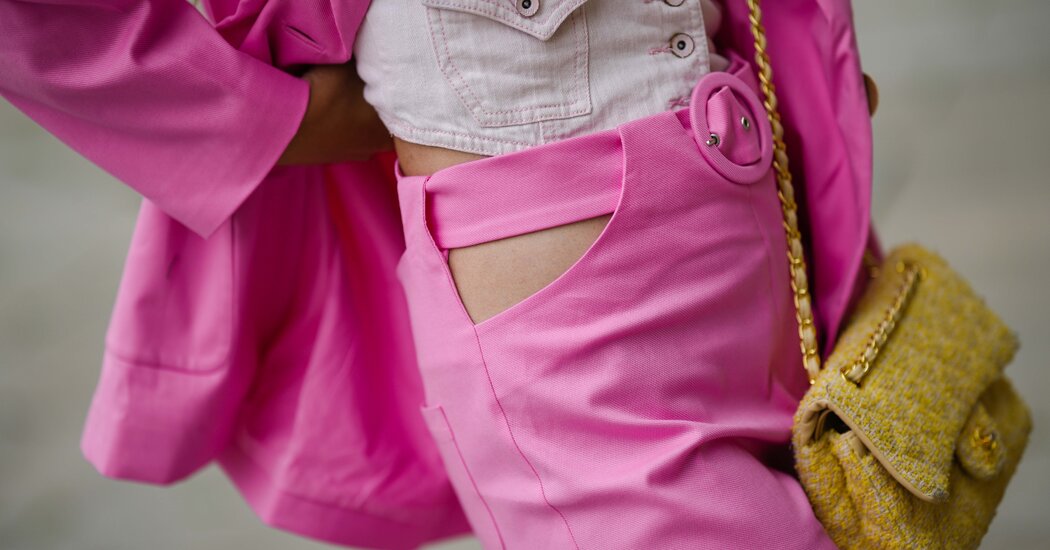
Why don’t women’s clothes have more pockets? And when they do, why are they so small and useless? It’s like being short-sheeted. I cannot believe this is still going on in the 21st century. Please explain. — Shoba
The pocket problem is a perennial one, for good reason. The story of those — often, as you say, tiny — compartments is crammed to the brim with plot twists that involve sexism, racism, control, economic disparity and more. Who knew so many hot-button social issues could be contained in such a tiny space?
Well, maybe Darwin. After all, pockets make evolutionary sense. In theory, the more necessities you can carry on your body, the more efficiently you can move through the world. As an article in The New York Times in 1899 read: If “Adam and Eve both began life without any pockets, it seems to me that the difference in the progress of the sexes toward pockets illustrates and proves the superiority of the male. Man’s pockets have developed, improved, and increased with the advances of civilization. Woman is actually retrograding — losing ground and pockets.”
(Seriously, the paper published that. Going through the archives can be a truly delightful experience.)
Indeed, pockets have been an issue for so long that a number of books have been written about them. There was, for example, “The Pocket: A Hidden History of Women’s Lives,” by Barbara Burman and Ariane Fennetaux; “Pockets: The Problem With Society Is in Women’s Clothing,” by Audrey N. Glickman; and, most recently, “Pockets: An Intimate History of How We Keep Things Close,” by Hannah Carlson.
When I emailed Ms. Carlson to ask her to explain the deal with pockets, she pointed out that pockets “became standardized in men’s wear as the suit transitioned from a craft to an industrialized product in the 1850s.” Pockets, she wrote, are considered just “a part of doing business in men’s wear.”
When it came to women’s wear, on the other hand, individual dressmakers ruled on the need for pockets. “People blamed fashion and women’s vanity for a lack of pockets,” Ms. Carlson wrote, because pockets could mess with the line of a dress or garment, especially if they were filled with stuff. “Activist Elizabeth Cady Stanton had to plead with her dressmaker to include a pocket in her gown. Her dressmaker countered that pockets would ‘bulge you out just awful!’”
But, Ms. Carlson continued: “Evident in the decisions that go into making some garment is the notion that men’s clothes are meant for utility and women’s for beauty” — or decoration. And that reflects “old ideas about women’s place and about the more limited social and economic contributions they are expected to make.”
Also, pockets, or the lack of them, have led to the rise of the handbag sector — you have to put all that stuff somewhere — and that has powered the luxury industry since the end of the last century. Meantime, the rise of fast fashion has meant fewer pockets, or fake pockets, since, Ms. Carlson said, “pockets are the first to go in any cost- or time-cutting and profit-boosting endeavor.” It has not been in anyone’s interest to rock the status quo.
Yet, things may be changing, not least thanks to the rise of unisex clothing. Hillary Taymour, the founder of Collina Strada, makes a signature pair of cargo pants with voluminous pockets that is one of her best sellers. (As it happens, she never carries handbags.) Phoebe Philo recently sneaked pockets into the side of an asymmetric white satin evening top/dress. Wes Gordon of Carolina Herrera almost always puts pockets in his evening skirts. In fact, it is possible we are entering a new golden age of women’s pockets.






